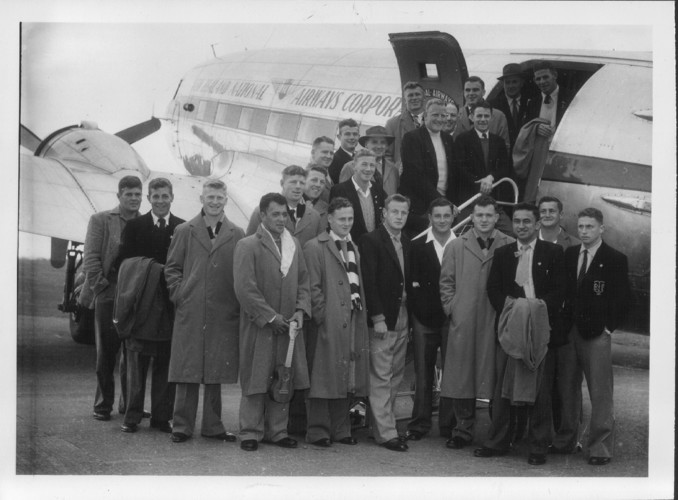
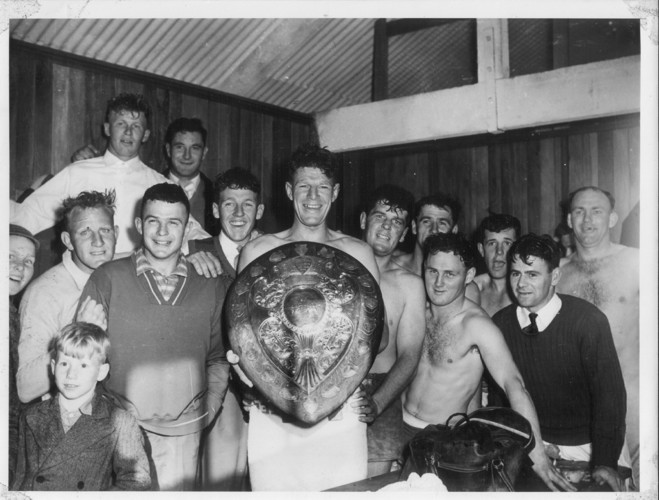
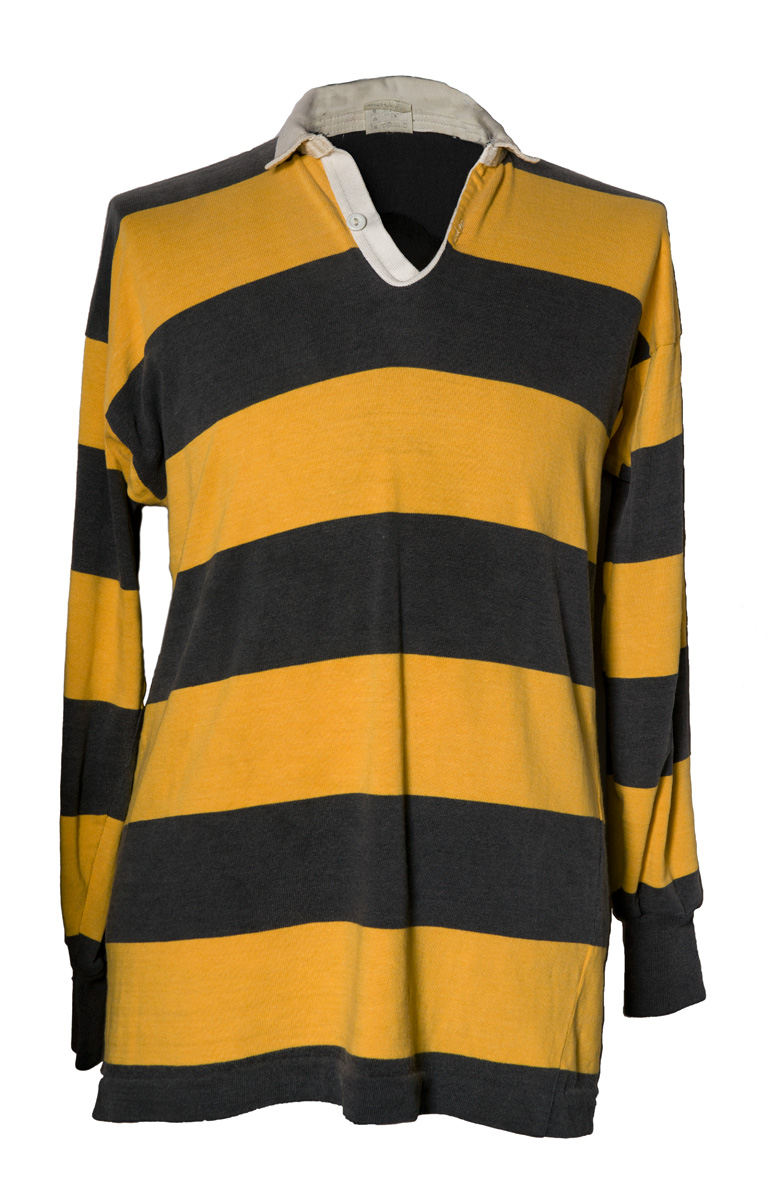
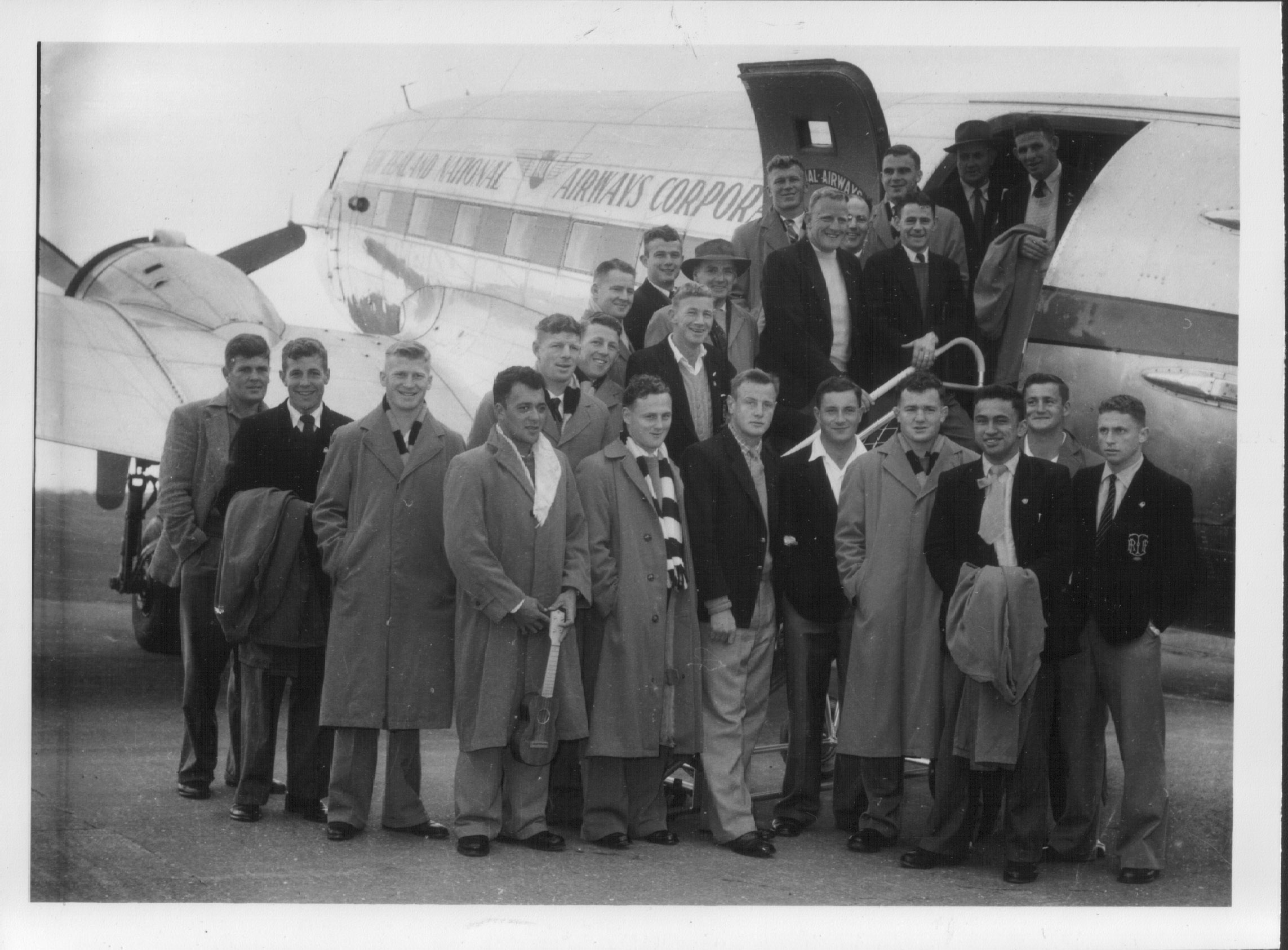
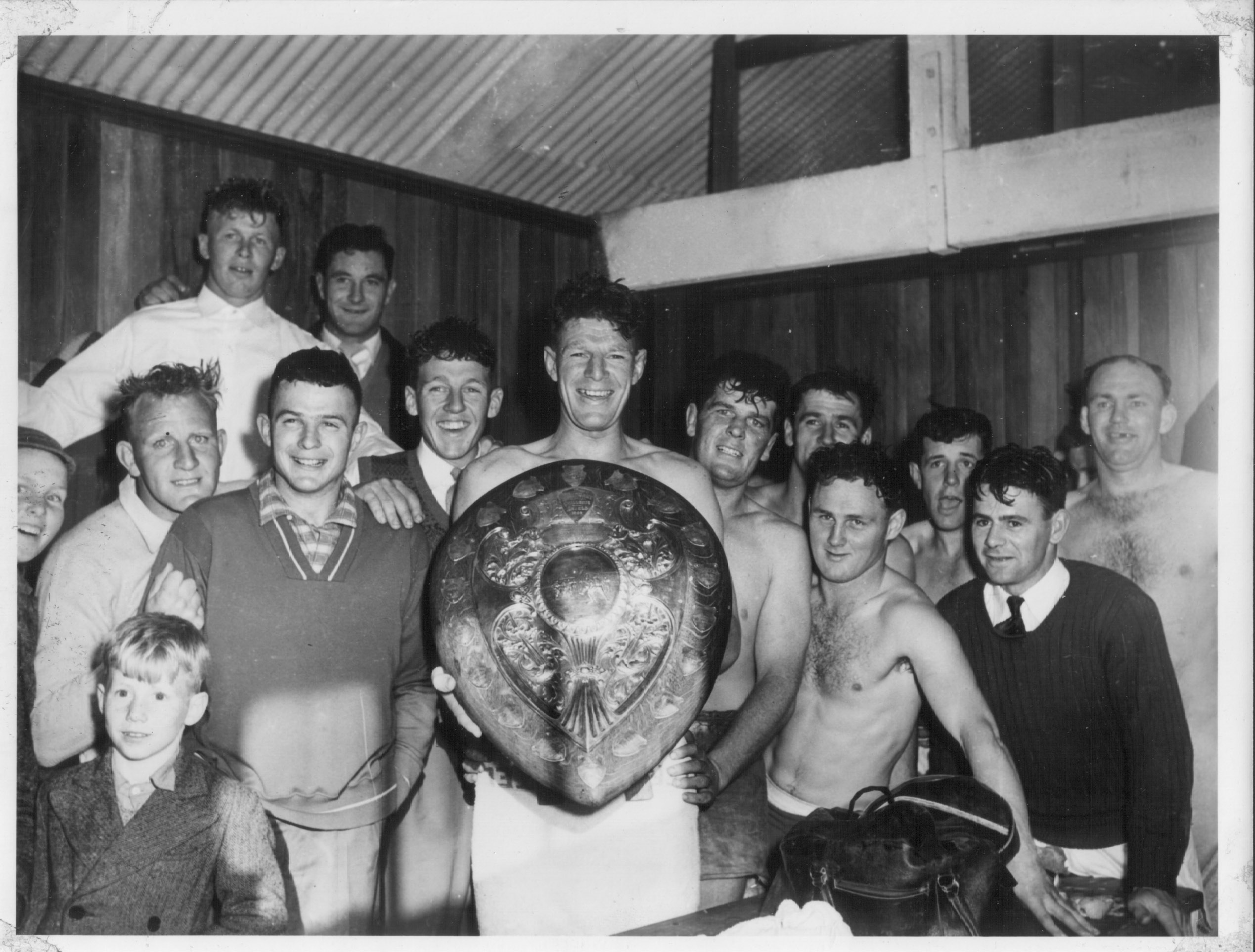
Peter Burke didn't believe the news when he was first called into the All Blacks. The New Plymouth man was a Caltex tanker driver at the time, and the message was delivered as he pulled into the yard at Port Taranaki. The terminal's manager, Bob Knott, was waiting for the promising young rugby player. "Bob put his hand up and said, 'You've got to get up to Auckland – you're in the All Blacks!'" Peter's reply was blunt: "That'll be the day." As he swung the tanker around to the back of the yard, Bob followed him: "Leave that there – get on home and get your gear ready. Jim Ridland [TRFU secretary] has your air ticket and you've got to fly to Auckland." Despite Bob's insistence, Peter was still doubtful as he strode into the office. "I didn't believe it. All of a sudden the phone went and it was Fred Duncan, the sports editor of the Taranaki Daily News. He said, 'Congratulations, you've been selected for the All Blacks as a reserve'. I thought, 'Woah, there must be something in this'." There was. Peter had been called into the squad for the third test against the British Lions at Eden Park in Auckland. The year was 1950. But first things first: "Bob (Knott) said to me 'And before you go home get down to the Breakwater Hotel and get a dozen beer to shout the boys'."
Peter did as he was told. "But I didn't stay behind to enjoy any of it."
The talented sportsman was the second All Black chosen from the Caltex crew, and Bob Knott reckoned he knew why. "I told you when you joined us that if you went and mowed the lawns around the compound you'd get in the All Blacks, because that's what [Jack] Sullivan used to do and he got in the All Blacks," the older man said. "Bob was a real character of a guy," Peter laughs. Bob died in 1990. Despite his colourful call-up, the Taranaki lock didn't get to play in that match. He hovers over a black-and-white photograph on the wall of his New Plymouth home, pointing out a younger version of himself wearing a black jersey minus the national sporting emblem. "You never got the silver fern on your jersey unless you took the field." He earned his emblazoned uniform in 1951, when he got in the team to tour Australia. After playing in the All Black trials, the team was read out at Athletic Park in Wellington.
"One of the greatest thrills a guy can get is to have your name called out to represent New Zealand in the All Blacks. It's a fabulous feeling." Peter played about six games on the Australian tour. In 1952 and '53 he played in the trials, but wasn't named in the squad. However, when the All Blacks returned from their 1953-54 tour of the British Isles, Peter was asked to captain the Rest of New Zealand to play the Men In Black on their return. It was a close match, with each side scoring five tries each. But the kingpins won 26-23. The following year, 1955, Peter got back into the All Blacks and played the first test against Australia in Wellington. He missed out the following year, but earned other rugby accolades. One of his career highlights was captaining the Taranaki team in 3-3 draw against the Springboks in 1956. "They [the South African players] never beat us – but they beat the All Blacks," he says. The selectors must have noted Peter's success, because the following year he was back in the New Zealand side for another tour of Australia.
But it’s likely Peter remembers the 1957 season for another golden moment. Taranaki rugby officials discovered that Ranfurly Shield holder Otago had a free weekend at the end of the season, so applied to the New Zealand Rugby Football Union (now NZR) for a special challenge match and were granted the chance. To do so, the Taranaki union had to negotiate with King Country. The Amber and Blacks were to play Colin Meads and his men that day, but in lieu of the change promised them the first challenge if Taranaki brought home the prestigious prize. They did just that, winning 11-9 against Otago at Carisbrook Park on September 28.
The Taranaki players received a hero's welcome at the old New Plymouth Aerodrome, where about 20,000 gathered to cheer them home. It had been 44 years since the Ranfurly Shield had been in Taranaki's possession, so Peter decided to throw all his efforts into keeping it. In 1958 he made himself unavailable for the All Blacks and captained the Amber and Blacks through the season dubbed the ‘Fabulous Winter’. To get the players fit, the Taranaki union and selectors, Jack Paterson (coach), Ray Potier and Ian McCready organised a pre-Shield tour.
The first match was against Auckland. "We took on the toughies right from the start, but Auckland beat us 24-21. It could've been anyone's game.” Next up was Southland at Invercargill, presumed to be another hard clash. "We cleaned them up 14-3. "Lo and behold, we had to play Otago again. I said to the boys 'If there's any game we have to win, it's this one, because if they win they'll say 'We should never have lost the Shield anyway'.’. We beat them 16-3," he says, still able to feel the satisfaction of that distant victory. "Then we go to Christchurch to play Canterbury and they were tough nuts led by none other than Tiny Hill and Co. Canterbury beat us 9-6 after a very controversial try that they got."
After the build-up tour, the Taranaki men put themselves on the line for real. "All these other provinces were in like hungry dogs. They thought 'Bloody Taranaki, they won't hang on to this Shield'." In the first challenge, Taranaki whomped Golden Bay-Motueka 56-8, and in the second they beat mid-Canterbury 16-0. The third Shield clash with King Country was Taranaki's first major challenge. "Down came the Meads boys (Colin and Stan). They had a powerful team. I think at half-time they were leading 11-3, but we turned them around and won 15-11." Colin Meads (known as Pinetree) is one of New Zealand's most famous All Blacks. "Piney has a wonderful record in rugby, but has never got his hands on the Shield," says Peter, still a mate of the great man. The rest of that season, Taranaki defended the Ranfurly Shield six more times. "It was a fabulous winter," he says.
Midway through the 1959 season, Southland beat Taranaki 23-6 to take home the Shield. In their first defence, the Southerners lost it to Auckland. In 1960, Peter retired from playing. His rugby days actually began in the Bay of Plenty. Peter, who was born in Tauranga on 22 September 1927, started playing the game at Edgecumbe Primary School. He became a Bay of Plenty representative in 1946. The following year, he took a job with Caltex and moved to Auckland. There, he played for the Marist club, which was then Auckland club champion. When his parents moved to Midhirst in Taranaki, Peter sought a transfer to New Plymouth so he could be close to his family. Within months of arriving in 1948, the keen young man found himself in the Taranaki representative team. He was 32 when he finally tidied away his playing gear. His expertise has never been out of sight.
It wasn't until 1963 that the Taranaki men were able to get their hands back on the Holy Grail of New Zealand provincial rugby. Wellington had lifted the Shield off Auckland, but promptly lost it to the Ross Brown-led Taranaki team. Even though Peter had retired from playing in 1960, he still had a hand in the team's direction. He had been chosen as a reluctant selector, despite firmly declining the invitation. "I picked up the paper and here I was, the third selector! I don't know who nominated me or who seconded me." Being reliable is part of Peter's make-up, so he stuck with it. "I thought, 'If I was to pull out now, I would disappoint somebody’." The late John (JJ) Stewart was the coach of the hand-picked team, which managed to fend off 15 challenges before losing to Auckland near the end of the 1965 season.
Meanwhile, Peter's career on the official side of rugby kept on rising. He coached the Taranaki Colts, and in 1970 became a North Island selector. He was also a strong club rugby man, becoming president of Tukapa in 1971-72. Because of work and family commitments, Peter lived in different parts of Taranaki where he played for both the Stratford and Hāwera rugby clubs. In 1978, he was named coach of the North Island team, appointed a New Zealand selector and coached the New Zealand Colts. He went on to coach the New Zealand Juniors in 1979 and 1980. It was obvious Peter was being groomed for the top job, one some Kiwis believe is up there with being prime minister. "In those days, you had to go through the system," he says. In 1981, Peter was appointed coach of the All Blacks. The first challenge was a two-match tour by Scotland. New Zealand won both clashes.
Next, was the tour that split the nation. For eight weeks, the Springboks played games around the country, including three test matches. The All Blacks took two, and lost one, winning the series. But that tour isn't remembered for the victories. It will forever be recalled for the civil unrest it caused, for the anger, the divided families, the protests, the batons, the barbed wire and the riot squads. The Springbok tour of 1981 split New Zealand down the middle. Half the people just wanted to watch top rugby against the powerful South African side; the rest believed the tour showed New Zealand's support for the racist regime of apartheid. It's history now. Peter also moved on, coaching the All Blacks in 1981-82 tour of Romania and France, winning both test series. In the middle of 1982, he coached the team in the Bledisloe Cup series against Australia. "It was understood that this was to be Graham Mourie's last season and all were determined to win the series to bring the cup back home and that's what happened." At the end of that season, Peter retired from coaching.
His official career continued, and he became president of the Taranaki Rugby Football Union in 1989. On paper, Peter has done everything in rugby, including being manager of touring under-19 teams studded with stars like Taine Randell, Andrew Mehrtens, Adrian Cashmore, Kees Meeuws, Justin Marshall, Carl Hoeft and Anton Oliver. "I have watched their progress ever since." Once again, Peter was being groomed for bigger things. In 1993, he was the liaison officer with the British Lions touring team. "So I was a busy boy," he says talking about his various roles. His biggest moment came in 1994, when he was named president of the New Zealand Rugby Football Union. This meant he had to welcome dignitaries, make speeches in the company of people like the prime minister, governor-general and foreign ambassadors. "You had to front up to all these special occasions and I had to stand up and talk. You had a few butterflies in your stomach," Peter admits.
But he was always well prepared. "No bugger came along and helped me with my speeches and I had to study the people who were there. You've got to do your homework," he says. Which is the case again. In April this year, Peter was named on the NZRU appeals committee, chaired by Auckland's Ron Don. "It's like the Supreme Court for New Zealand rugby," Peter says. Members of the five-man committee act like judges, weighing up evidence when players and administrators appeal rulings and penalties opposed by the union's disciplinary body. The appeals committee passes final judgement, which cannot be overthrown. "It's an honour to be on that. I never thought I'd be down there again," he says of having a role with the NZRU in Wellington. And once again, his loyal wife will be backing him all the way. "Betty has been a great support over the years, by God she has. I don't know what I would've done without her." Peter, a father of three daughters, has also found strength inside himself. He lives by a simple philosophy of always doing what he has promised, not backing down when things get tough and putting his best foot forward. He nods: "That's the whole thing in life – you can only do your best." Peter Burke was made a life member of the NZRU in April 2008.
100 Years of Taranaki Rugby 1885-1985 (1985). New Plymouth: Taranaki Rugby Union.
Ranfurly Record: The Story of Two Successful Shield Tenures (1965). New Plymouth: Taranaki Newspapers.
Macdonald, F. (1996). The Game of our Lives: The Story of Rugby and New Zealand and how they've Shaped Each Other. Auckland: Viking.
Palenski, R. (2001). The Jersey: The Pride and the Passion, the Guts and the Glory: What it means to wear the All Black jersey. Auckland: Hodder Moa Beckett.
Swan, A.C. (1992). History of New Zealand Rugby Football. Auckland: Moa.
Please do not reproduce these images without permission from Puke Ariki.
Contact us for more information or you can order images online here.